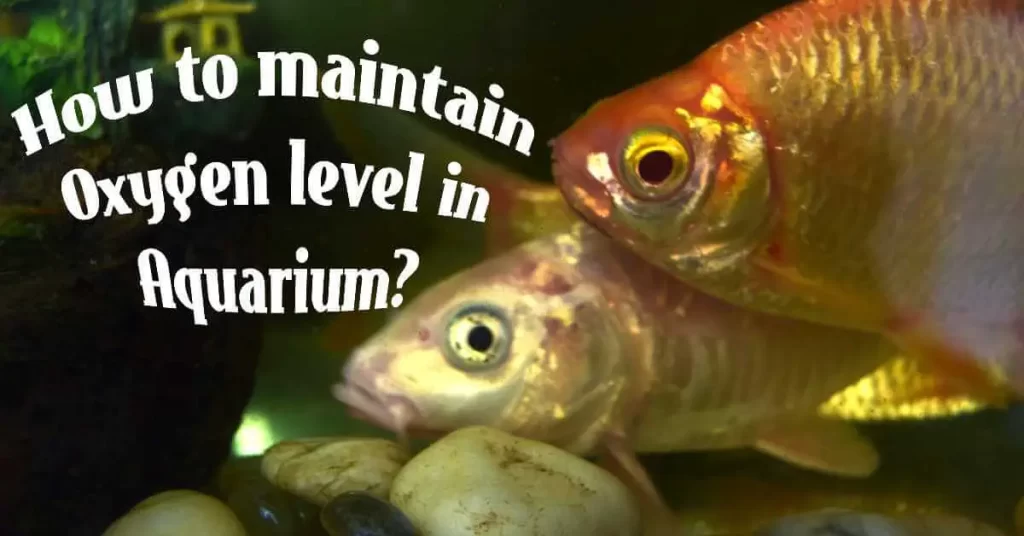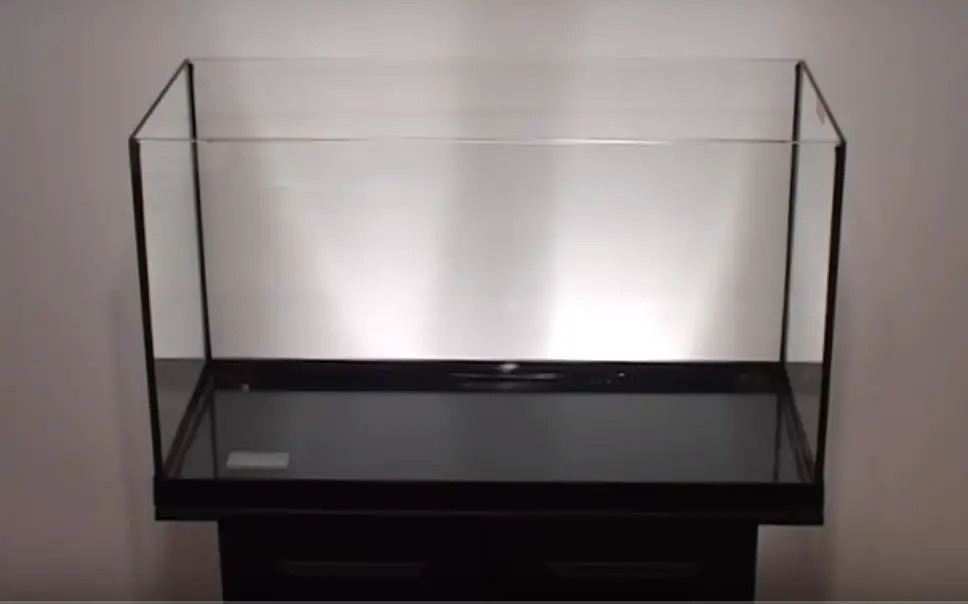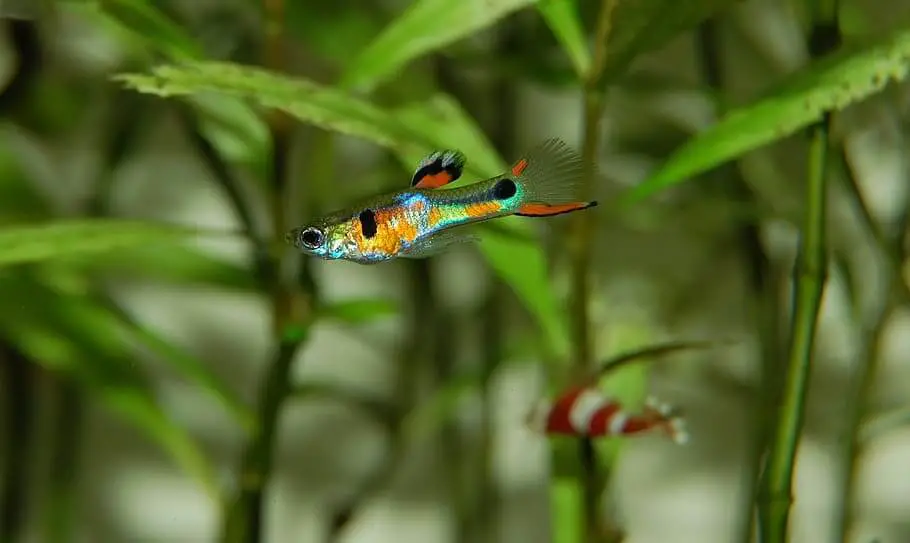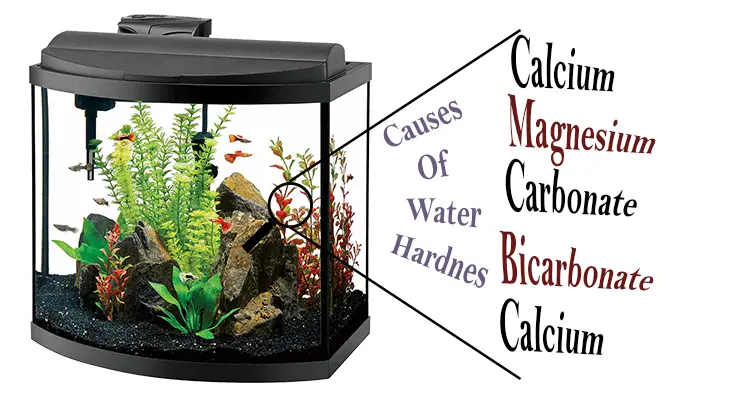There are circumstances where the fish feel the lack of oxygen just like any other living creature. They take oxygen from the water, unlike other living beings which take oxygen from the open air. For such activity, fish needs regular oxygen supply and one should check the oxygen level in their aquariums time and often. Here is how you should maintain the oxygen level in the aquarium to keep your fish healthy.
In case of an emergency situation, you can do a water change of about 50%. This increases the oxygen level instantly. Moreover, using an air pump to pump the oxygen is the fastest way to maintain the oxygen level.
How Fish Breathe?
Unlike land creatures, fish have gills to breathe in oxygen which is present in the water. First, they take a gulp of water through their mouth which then passes through the feather-like fiber of the gills.
Secondly, these gill fibers absorb the oxygen from the water and sent it to the bloodstream. Finally, the heart distributes the pumped blood throughout the body of the fish and simultaneously releases carbon dioxide through the gills.
Importance Of Oxygen Level For Fish
Dissolved oxygen (DO) is important for fish in order to survive. The depletion of DO is one of the major causes of fish deaths. Dissolved oxygen is also responsible for the growth of fish and fish appetite. So maintaining the right DO is crucial for maintaining the mortality rate.
Excess fish in a tank produces excess waste which the bacteria feeds. Your aquarium requires an adequate balance of bacteria as well in order to complete the nitrogen cycle.
But if the waste is too much, the bacteria can deplete the oxygen which is required by the fish so maintaining the waste is important so that the fish can get enough oxygen. Also, excess waste can lead to the generation of ammonia and nitrates which results in depletion of oxygen.
Find out Why Do Fish Tanks Get Dirty So Fast and How To Clean And Maintain Tanks.
Right Amount Of Oxygen In A Fish Tank
Fish are very sensitive to low oxygen and will immediately respond to it. It shows symptoms such as moving less, eating less, and also panting at the surface of the water.
These aquatic beings would miserably be searching for more oxygen leading them to let more and more water pass through their gills. This activity can also be confusing to them reacting to feeding them, the difference is they would be more vigorous and open their mouth wide to get the oxygen from the surface.
This, however, does not apply to every breed of fish, and for some like bettas and gouramis is totally natural behavior.
Related articles about bettas you may like:
- Black Orchid Betta – Care, Size, Diet, Breeding, Water Parameter, Lifespan
- Betta Fish Tail Types and Patterns – Updated List 2020
- GloFish Betta Care Sheet: Tank Requirement, Lifespan, Breeding, Tank Mates
- Betta Fish Colors and Color Patterns- List of 30 plus unique colors
How Much Oxygen Does A Fish Require?
This is a very difficult question as it depends on the size, temperature, physical activity, and many other factors. It also brings a question, how much oxygen can dissolve in a particular aquarium?
The factors responsible include the temperature of the water where if the temperature rises, the amount of oxygen that the water can hold falls. Another factor is the amount of salt in the water, the saltier the water, the less oxygen it holds.
Considering the size of the fish, the smaller the fish the lesser the oxygen required and vice versa. Moreover, the feeding rate also describes how much oxygen fish needs. The more you feed them the more oxygen they require.
So, generally speaking, there is not a clear answer to how much oxygen does a fish needs. There are also various kits you can use to measure the oxygen level of your tank. According to the fish in the tank, different tanks require different oxygen levels.
Checking The Oxygen Level
There is a portable dissolved oxygen meter for you to check the oxygen level of your aquarium. It is used by calibrating the meter first and you can place it in the water for the readings. It usually shows how many milligrams of oxygen are there in each liter of water.
There are also chemical test items that are used to check the oxygen level in terms of the pH meter. But be sure to test the chemicals before purchasing them as some might be harmful to the fish.
KKmoon Digital Dissolved Oxygen Detector Water Quality Tester is a portable dissolved oxygen meter, DO Pen Type Water Quality Tester Dissolved Oxygen Analyzer which is perfect for you.
Causes For Low Oxygen Level
Low oxygen levels are nightmares for fish in an aquarium. The common causes of low oxygen level might be:
Overstocking Of Fish
It is self-explanatory that, the greater the number of fish in an aquarium, the more oxygen each individual fish need so this is one of the most common reasons for low oxygen.
How To Set A 50-Gallon Fish Tank? Learn about it here.
Water Temperatures
Changes in water temperatures also define how much oxygen is needed, as mentioned earlier, the higher the temperature, the less oxygen the water can hold and vice versa. So, maintaining the right water temperature is quite important for fish.
Chemicals Usage
Using chemicals does not necessarily deplete the oxygen level but some chemicals which are used to cure the diseases might affect the oxygen-carrying capacity of water to some extent. So, you must increase the circulation of water before treating the fish if it somehow manages to deplete the oxygen.
Maintain Aquarium Water Hardness properly from our Freshwater Aquarium Guide.
Changes In Water In The Past Few Days
If you made some changes to the water, for instance, change the water itself or added some types of equipment in the aquarium.
Is Too Much Water Change Harmful For Your Fish: How To Do It Safely? Learn about it here.
Plants
Plants are known to take in carbon dioxide and give out oxygen right? But this is not the case with aquariums as they do not get direct light, and when that happens, it does the exact opposite.
Lack Of Aeration
Lack of proper filters and the quality of water are also the cause of low oxygen in an aquarium. In some cases, a powerhead- a powerful form of aeration is also needed to achieve the desired oxygen level in a tank.
Ways To Aerate/Maintain Oxygen Level In Tanks
There are different ways in which the adequate oxygen level in tanks can be achieved. Some of them are mentioned below:
HOB (Hang On Back) Filter
These filters help to increase the oxygen level in the tanks by filtering the water which will fall directly down to maintain the saturation of the water. It also helps to distribute water throughout the whole tank to provide oxygen in every part of the tank.
Penn-Plax Cascade Hang-on Aquarium Filter With Quad Filtration System Cleans Up to 100 Gallon Tank (CPF5) is the best filter for your aquarium.
Spray Bar
This tool also helps to distribute the saturated water throughout the surface of the tank which will eventually lead to an increase in oxygen level.
I would recommend you Moen 20200 Swing’N’Spray Aerator.
Air Pump
This is the most common and straightforward way of increasing the oxygen level of the tank as it directly takes in oxygen from the air and pumps it to the water in the tank through an air stone.
I suggest you use Uniclife Aquarium Air Pump 4 Watt 4-LPM 2 Outlets with Accessories, Adjustable Oxygen Pump for 20-100 Gallon Fish Tank.
Water Change
Frequent change of water is necessary for the fish as the freshwater you put in holds more oxygen than the old water. Be careful about changing about 50% of the water as fish may not be adapted to sudden changes in water.
Powerhead
If the filter that you are using is not providing enough circulation, you can use a powerhead which is much more powerful and also lets you adjust how much air they intake and increase overall aeration.
SUN Microsystems JVP Series Submersible Circulation Powerhead Pump, 800 GPH, 2Piece is the one powerhead that I suggest.
Plants
As discussed earlier plants tend to deplete the oxygen but when maintained in a properly lit environment they produce oxygen for the fish. Also, it is said that plants and fish are the best compliments for each other as one provides what the other needs.
How Long Does Oxygen Last In A Fish Tank?
The oxygen can last for 2 days if the aquarium is not overcrowded or are in full health, to begin with. It all depends on the number of fish you keep in an aquarium and how much oxygen each takes in. The lower the number of fish, the more the oxygen will last.
Is There A Possibility To Have Too Much Oxygen In A Fish Tank
When it comes to having too much oxygen in the fish tank. There is hardly any chance that you might face this. This is only caused by a disease called gas bubble disease. It is basically the gases developed in the fish bloodstream. This causes nitrogen to get built up in the water and is very rare. So, there is not much chance that the tanks get filled up with oxygen.
How can you maintain the hardness of your water? Check it out here!
Frequently Asked Questions
Does Filter Provide Oxygen?
Filters are known to increase oxygen and purify the water as they cause water movement at the surface where they take in oxygen and distribute it to the aquarium.
Does Air Pump Provide Oxygen?
Yes, the air pump provides oxygen through a hose which will pump air into the aquarium to provide additional oxygen in the water. It also helps discharge all the harmful gases.
How Long Can Fish Survive Without an Air Pump?
Without an air pump and in still water, the fish can survive only up to two days. However, with other filters producing the right amount of water movement, there is no problem with the fishes even without it.
Conclusion
Oxygen may be invisible to your eyes but plays a vital role in your aquarium. Without proper maintenance of oxygen levels in an aquarium the fish might not survive and also might not grow properly. Various measures should be applied to maintain the oxygen level which helps the fish to be healthy. The use of various filters, air pumps, powerheads should be researched for specific fish and should be provided to them.
Related articles you may like:






